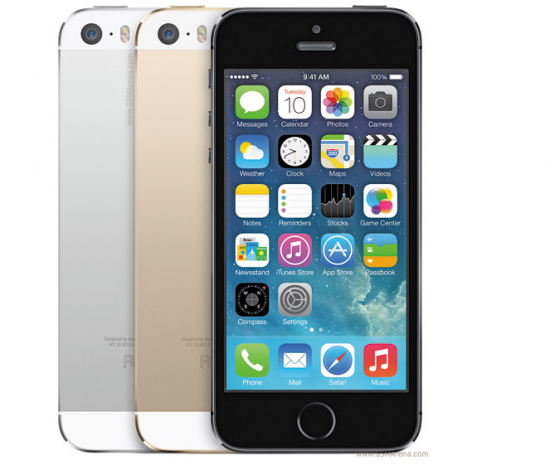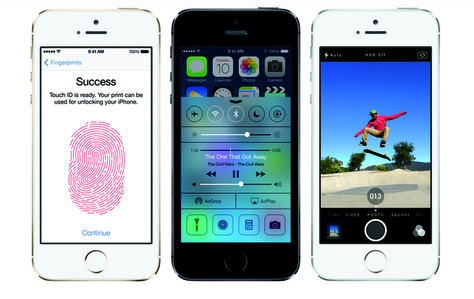Almost a year after the iPhone 5 made its grand debut, Apple has unveiled its successor: the iPhone 5S.
Just as we had anticipated, the new model is one of Apple’s bi-annual upgrades on the original and will in fact completely replace it when it goes on sale on September 20th – the iPhone 5 will be retired and the 5S will take its place. So what exactly is the iPhone 5S all about? What’s new, what’s the same and why should you be bothered about another phone from Apple? Here’s everything you need to know.
Design
Design-wise the iPhone 5S is almost identical to the iPhone 5. It has the same measurements, still weighing in at 112g and 7.6mm thick. It features the same metal design, with the only discernible differences being the silvery ring around the home button and a dual LED flash on the back, but more on those two later.
Processing power
Apple has upgraded the processor considerably to its own new A7 chip, which uses a 64-bit architecture. The Cupertino company claims that the iPhone 5S is the world’s first 64 bit smartphone and technically it’s right. iOS 7 and all the apps it contains are 64 bit compatible and Apple claims that the new chip means a 40x speed improvement over the original iPhone and graphics 56 times better. That 64-bit processor also makes the iPhone 5S’s big feature possible; the fingerprint scanner.
It’s got a fingerprint scanner!
The rumours turned out to be true. The iPhone 5S features a fingerprint scanner – the first smartphone to do so since the Motorola Atrix 4G back in 2011. Apple’s acquisition of biometrics firm AuthenTec for $356 million in 2012 led to the feature, which allows the user to simply place a finger on the iPhone’s home button in order to authenticate and unlock the phone.
The silver ring around the home button is stainless steel and detects your finger, waking up the fingerprint sensor and kickstarting the software into detecting you as a registered user and unlocking the phone. It’s also possible to store multiple fingerprints so you can let family members or friends use your iPhone without them knowing the vital passcode.
The camera is much improved
The rear camera is still an 8 megapixel sensor which is sure to lead many to think “it’s still got the same camera as the iPhone 5” but that’s not the case. The rear camera now has a much improved f/2.2 aperture and a sensor that’s 15% larger, leading to much better low light shots and a 33% increase in light sensitivity. Apple has also upgraded the flash to a dual LED one, which it calls ‘True Tone’ flash, which offers different colour temperatures so as to reduce the chance of washed out images. The camera also features auto image stabilisation, so no more blurry wobbly hand pictures.
The screen is the same
As with the design, Apple has kept the screen: a 4-inch Retina display sporting a high resolution of 1136 x 640 pixels at 326 pixels per inch. Whilst Android manufacturers race to use 5+ inch Full HD displays, Apple feels it can stick with the high quality Retina display for another year.
It measures your motions
Inside the iPhone 5S is something called the M7 motion co-processor. Its purpose is to record movement from the accelerometer, gyroscope and compass. Why? Apple says it will pave the way for a brand new age of fitness and health apps which can utilise the phone to easily provide things like your running speed, steps taken and more.
There’s a gold one
Yep, the gold iPhone rumour was true. Alongside the classic white and black models will be a gold one, which we reckon looks more like a champagne colour, really. There’s no 128GB version though, only 16, 32 and 64GB models as per usual.
Pre-orders, launch dates and prices
You’ll be able to pre-order the iPhone 5S from September 13th online and in Apple Stores, ready for delivery or collection on September 20th. Prices start at £550 for the 16GB, going up to £630 for the 32GB and finally £710 for the 64GB model. It’s going to be on every major UK network and is also compatible with 4G on EE, Vodafone and O2.



